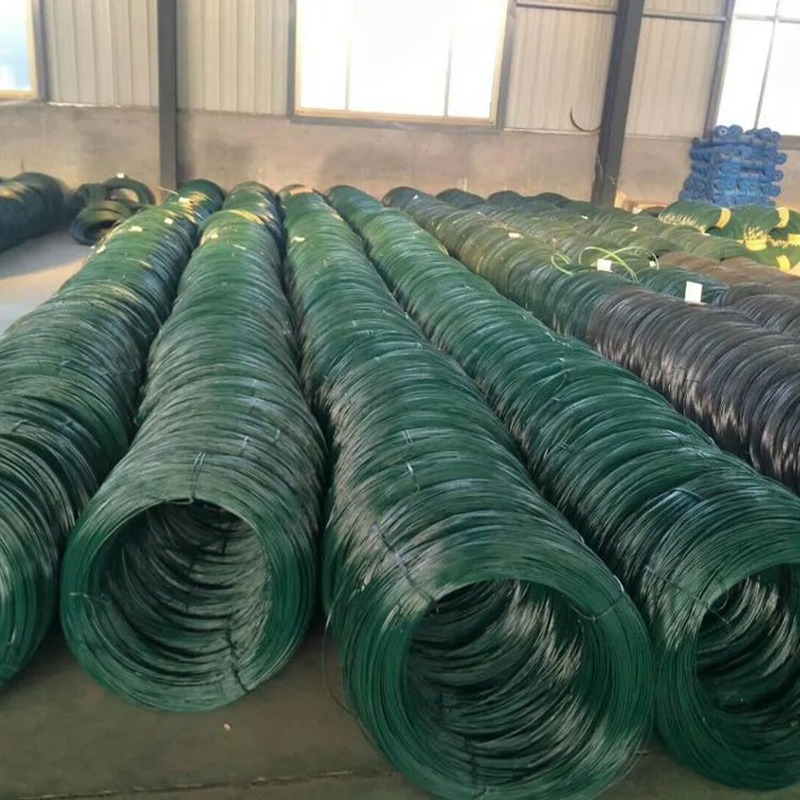-
+86 15030157877
-
sales@galvanizedmetalmesh.com
Dec . 18, 2024 21:03 Back to list
stainless steel wire manufacturer
The Evolution and Importance of Stainless Steel Wire Manufacturing
Stainless steel wire has become an essential component across various industries, thanks to its unique properties such as resistance to corrosion, high tensile strength, and outstanding durability. The process of manufacturing stainless steel wire has evolved significantly over the years, influenced by advancements in technology, an increasing appreciation for quality, and the growing demands of modern applications.
Understanding Stainless Steel
To comprehend the importance of stainless steel wire, it’s crucial to first understand the material itself. Stainless steel is an alloy primarily composed of iron, chromium (a minimum of 10.5%), and nickel, along with other elements that enhance its characteristics. The incorporation of chromium creates a passive layer of chromium oxide on the surface, which protects against corrosion. This unique feature makes stainless steel ideal for wire production, as it can withstand harsh environments, including those found in maritime, medical, construction, and food processing applications.
The Wire Manufacturing Process
The manufacturing of stainless steel wire involves several steps, including drawing, annealing, and finishing.
1. Wire Drawing The core of the stainless steel wire manufacturing process begins with wire drawing. In this stage, larger diameter rods are pulled through a series of drawing dies, reducing their diameter while increasing their length. This technique not only shapes the wire but also increases its tensile strength due to the work hardening that occurs during the drawing process.
2. Annealing After drawing, the wire undergoes an annealing process, where it is heated to a specific temperature in a controlled environment and then cooled. This treatment helps to relieve internal stresses caused by drawing, resulting in a more ductile and workable wire. Depending on the desired characteristics, the annealing process can vary in temperature and duration.
3. Finishing The final phase involves various finishing processes, including pickling, passivation, and surface polishing. Pickling removes any oxidation from the surface of the wire, while passivation enhances its corrosion resistance by creating a thicker chromium oxide layer. Surface polishing can also be implemented to achieve a smooth and bright finish, which is particularly crucial for applications requiring aesthetic appeal.
Applications of Stainless Steel Wire
stainless steel wire manufacturer

Stainless steel wire is utilized across numerous sectors, each demanding different specifications and characteristics
.- Construction In the construction industry, stainless steel wire is often used for reinforcing concrete, where its strength and durability play a vital role in structural integrity. - Automotive The automotive sector employs stainless steel wire in various components, including springs, cables, and brake lines, ensuring reliability and safety under extreme conditions.
- Medical Medical applications require the highest levels of hygiene and strength, making stainless steel wire perfect for surgical instruments and implants.
- Food Processing In food manufacturing, where cleanliness is paramount, stainless steel wire is used in conveyors and baskets due to its non-reactive surface.
The Future of Stainless Steel Wire Manufacturing
As we look toward the future, the stainless steel wire manufacturing industry faces both challenges and opportunities. The demand for sustainable manufacturing practices is prompting manufacturers to increase their focus on recycling and reducing waste. Innovations in technology, including automation and smart manufacturing, are also set to enhance productivity and quality assurance.
Moreover, the growth of renewable energy sectors, such as wind and solar industries, presents new market opportunities for stainless steel wire producers. With applications ranging from structural components to wiring for electrical systems, the versatility of stainless steel wire is set to be a key contributor to advancements in these fields.
Conclusion
In conclusion, the significance of stainless steel wire manufacturing cannot be overstated. It is a pivotal part of modern manufacturing and engineering, providing solutions across numerous applications. As technology continues to evolve and industries grow, the stainless steel wire sector will undoubtedly adapt, ensuring its place as an integral element in both current and future innovations.
-
Welded Gabion Solutions: Durable & AI-Enhanced Designs
NewsAug.01,2025
-
Premium Welded Gabion Mesh | Robust & Eco-Friendly
NewsJul.31,2025
-
Premium Eco-Friendly Roof Tiles | Affordable & Durable
NewsJul.31,2025
-
Premium Roof Tiles for Durable & Stylish Roofing Solutions
NewsJul.30,2025
-
High-Quality Roof Tiles for Durable & Stylish Roofing Solutions
NewsJul.29,2025
-
High Quality Square Wire Mesh Manufacturer & Supplier for Wholesale
NewsJul.29,2025



